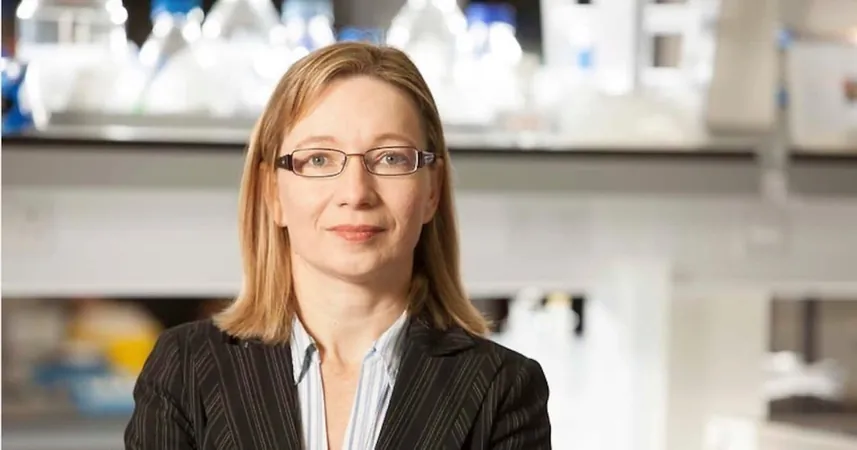
Revolutionary Stem Cell Transplant Offers Hope for Men with Azoospermia!
2025-04-04
Author: Jia
Revolutionary Stem Cell Transplant Offers Hope for Men with Azoospermia!
In a groundbreaking medical development, scientists are pioneering a treatment for azoospermia – a condition affecting approximately 645,000 men aged 20 to 50 in the United States, where men produce no sperm in their ejaculate. Researchers are now experimenting with transplanting sperm-forming stem cells into the male reproductive system, a procedure that, if successful, could fundamentally alter the landscape of male fertility treatments.
Dr. Justin Houman, an assistant professor of urology at Cedars-Sinai Medical Center, highlights the transformative potential of spermatogonial stem cell (SSC) transplantation. “If refined and proven safe, this technique could restore fertility for men who have lost the ability to produce sperm because of factors such as cancer treatments or genetic conditions,” he stated. This therapy may be particularly beneficial for cancer survivors who underwent treatment before reaching puberty or men suffering from testicular failures.
How Does the Procedure Work?
Central to this innovative strategy are sperm-forming stem cells, which are typically found in the testicles before puberty. These cells mature into sperm as testosterone levels rise during adolescence. Unfortunately, medical conditions or treatments like chemotherapy can damage these essential cells, leading to infertility.
The procedure begins with a young patient wishing to preserve their sperm-forming stem cells. Using an ultrasound-guided needle, healthcare providers can extract these stem cells from a network of tubes in the testicles known as the rete testis, and subsequently freeze them for future use. In a later procedure, these preserved stem cells can be safely reintroduced into the rete testis, ideally allowing them to mature into sperm.
Prior animal studies have shown promise, with male mice and monkeys successfully producing sperm after similar procedures.
Recently, the technique has been applied to humans for the first time. Researchers documented a case involving a man in his early 20s who received a transplant of his own sperm-forming stem cells, preserved during his childhood prior to chemotherapy for bone cancer. Although no sperm has been detected in his semen yet, ultrasounds indicate that the transplant did not damage his testicular tissue, and his hormone levels remain stable. Researchers are monitoring his semen biannually for signs of reproductive cell re-emergence.
Challenges and Future Prospects
However, the results have not been unequivocally successful. The researchers noted that one reason no sperm has yet been detected could be the limited quantity of stem cells collected from the patient during childhood. To minimize tissue trauma, only a small number of stem cells were collected, potentially restricting the number of cells able to develop into sperm.
If sperm production does not occur, alternative approaches exist. Doctors may consider surgical recovery of any small amount of sperm generated by the stem cells. Moreover, Dr. Laura Gemmel from Columbia University proposed an innovation called the Sperm Tracking and Recovery (STAR) System. This technology integrates artificial intelligence and microfluidics to identify and retrieve rare sperm cells, emphasizing that just one sperm is enough to create an embryo.
“The advancements we've seen in techniques like ovarian cryopreservation for young girls with cancer give hope that a viable solution can be provided for young boys aiming to father biological children in the future,” Dr. Gemmel expressed.
As with any medical innovation, the sperm stem cell transplant carries certain risks. There is a possibility that some transplanted cells could harbor cancerous genetic mutations, particularly concerning for previous leukemia patients. Additionally, while using the patient’s own cells minimizes rejection risks, there remains a theoretical chance that the immune system could react negatively, potentially causing inflammation.
Ethical considerations also abound, especially regarding the collection of sperm stem cells from minors. Determining the ability of these young boys to consent to the procedure and manage expectations about the long-term storage of their biological material poses significant questions for the medical community.
As these studies evolve, Dr. Houman emphasizes the importance of proceeding with caution. "While this is promising science, it's still early days, and we must ensure rigorous oversight," he cautioned.
This pioneering work not only holds immense potential for many men battling infertility but also opens the door to a future where parents can hope for biological children regardless of previous health challenges. Keep an eye on this evolving story as researchers continue to push the boundaries of what's possible in reproductive medicine!


 Brasil (PT)
Brasil (PT)
 Canada (EN)
Canada (EN)
 Chile (ES)
Chile (ES)
 Česko (CS)
Česko (CS)
 대한민국 (KO)
대한민국 (KO)
 España (ES)
España (ES)
 France (FR)
France (FR)
 Hong Kong (EN)
Hong Kong (EN)
 Italia (IT)
Italia (IT)
 日本 (JA)
日本 (JA)
 Magyarország (HU)
Magyarország (HU)
 Norge (NO)
Norge (NO)
 Polska (PL)
Polska (PL)
 Schweiz (DE)
Schweiz (DE)
 Singapore (EN)
Singapore (EN)
 Sverige (SV)
Sverige (SV)
 Suomi (FI)
Suomi (FI)
 Türkiye (TR)
Türkiye (TR)
 الإمارات العربية المتحدة (AR)
الإمارات العربية المتحدة (AR)